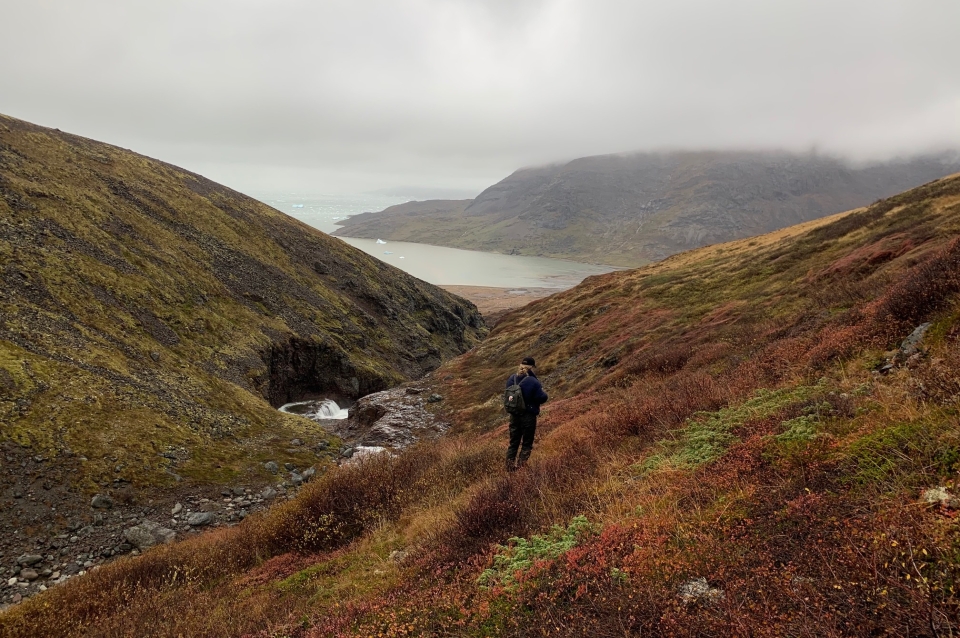A Greener Greenland
Through a semester-long studio course, Billy Fleming's students brainstormed possibilities for a green economy in a former mining town in one of the fastest-warming regions on Earth.
Stuart Weitzman School of Design
102 Meyerson Hall
210 South 34th Street
Philadelphia, PA 19104
Through a semester-long studio course, Billy Fleming's students brainstormed possibilities for a green economy in a former mining town in one of the fastest-warming regions on Earth.

Hiking to the Kvanefjeld mining site, 2022. Fleming has taught this course, Designing a Green New Deal, in different iterations and locales, for more than five years. (Photo Billy Fleming)
Michael Grant
mrgrant@design.upenn.edu
215.898.2539
The town of Narsaq (pop. 1,346) lies on the southern tip of Greenland, its rolling green turf punctuated by grey-roofed houses painted in primary colors, its bay dotted with the flotsam and jetsam of thawing sea ice. To the north, mountains rise. A series of stepped terraces are etched out of the flinty tops, like an ashen rice paddy where nothing grows and nothing lives.
These terraces are the remains of an old Narsaq uranium mine called Kvanefjeld, or Kuannersuit in Greenlandic and of the second densest collection of rare earth elements in the world, says Billy Fleming, the Wilks Family Director of the Ian L. McHarg Center at the Weitzman School of Design. Fleming, a landscape architect, teaches an annual studio course, Designing a Green New Deal: The Spatial Politics of Our Response to Climate Change. In the last five years, Fleming and graduate students enrolled in the Master of Landscape Architecture and Master of City Planning programs have looked at the coalfield-to-prison pipeline in Central Appalachia and now the climate future of Greenland, where the ice sheet is rapidly melting, exposing new land, new potential, and new risks for the island.
During the semester-long studio course this past fall, the students’ research was collated into a field guide, a compendium of information about Greenland, its systems, its culture, and its connections to the rest of the world. “Through compiling the guide, students examine all aspects of life, from nature to the economy,” Fleming says. “Where do people work? What are the seasonal rhythms of work there? How does that connect to cultural practices that are native to South Greenlanders?”
In addition to the field guide, the third-year graduate students developed speculative projects around the conservation or protection of Southern Greenland and its unique properties of place and culture. Some students worked on food systems, others on industry, energy, or cultural history. All projects were aimed at the desire to develop economic alternatives to industrial-scale mining and extraction in the region.
With this idealized vision, students worked backward to construct a narrative, Fleming says. “They were all searching for this way of thinking beyond the next 10 years, thinking to the end of the century, about the kind of world that Greenlanders have dreamt about, have written about, have talked about, and to give that a kind of visual and spatial character. And to then tell critical stories about how we get there.”
Read the full story from Penn Today.